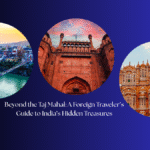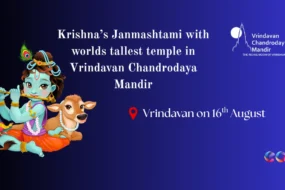
Croatia is a country that has something for everyone. Whether you are looking for stunning beaches, historic cities, natural wonders, or vibrant nightlife, you will find it in this Mediterranean gem. Croatia is also one of the most popular destinations in Europe, attracting millions of visitors every year. But what makes Croatia so special? What are the best places to visit, the best time to go, and the best travel guides to use? In this article, we will answer these questions and more, giving you a comprehensive overview of Croatia tourism in 2023.
Table of Contents
Why visit Croatia?
There are many reasons to visit Croatia, but here are some of the most compelling ones:
The coast and the islands. Croatia has over 1,800 kilometers of coastline and more than 1,200 islands, making it a paradise for beach lovers and island hoppers. You can enjoy the crystal-clear waters of the Adriatic Sea, relax on pebbly or sandy beaches, explore charming fishing villages or glamorous resorts, and discover hidden coves and caves. Some of the most popular islands include Hvar, Korcula, Brac, Vis, Mljet, and Pag.
The culture and history. Croatia has a rich and diverse cultural heritage that reflects its turbulent past and its location at the crossroads of Central and Southeast Europe. You can admire the Roman ruins of Split and Pula, the medieval walls of Dubrovnik and Ston, the Renaissance architecture of Sibenik and Trogir, the Baroque churches of Zagreb and Varazdin, and the modern art and design of Rijeka and Zadar. You can also learn about the traditions and customs of different regions, such as Istria, Dalmatia, Slavonia, and Lika.
The nature and wildlife. Croatia is blessed with stunning natural scenery that ranges from mountains and forests to lakes and waterfalls. You can hike through national parks like Plitvice Lakes, Krka, Paklenica, Risnjak, and Sjeverni Velebit, where you can see diverse flora and fauna. You can also enjoy activities like rafting, kayaking, cycling, climbing, zip-lining, and horseback riding in places like Cetina River, Zrmanja River, Velebit Mountain Range, Konavle Valley, and Peljesac Peninsula.
The food and wine. Croatia is a foodie’s dream destination, with a cuisine that combines influences from Mediterranean, Central European, Balkan, and Ottoman cuisines. You can savor fresh seafood dishes like grilled fish, octopus salad, black risotto, or buzara (shellfish stew), meat dishes like cevapi (grilled minced meat), kulen (spicy sausage), pasticada (beef stew), or zagrebacki odrezak (breaded veal stuffed with cheese and ham), or vegetarian dishes like sarma (stuffed cabbage rolls), ajvar (red pepper relish), or strukli (cheese-filled pastry). You can also taste some of the finest wines in Europe, such as malvazija (white wine from Istria), plavac mali (red wine from Dalmatia), grasevina (white wine from Slavonia), or prosek (sweet dessert wine).
Where to visit in Croatia?
Croatia has many places to visit that cater to different tastes and preferences. Here are some of the most popular ones:
Dubrovnik. Dubrovnik is one of the most beautiful and famous cities in Croatia and the world. It is known as the “Pearl of the Adriatic” for its stunning location on a rocky peninsula surrounded by turquoise waters. It is also a UNESCO World Heritage Site for its well-preserved old town that dates back to the 13th century. You can walk along the city walls that offer spectacular views of the sea and the rooftops, visit landmarks like the Rector’s Palace, Sponza Palace, Franciscan Monastery, and Lokrum Island, or take a cable car to Mount Srd for a panoramic view of the city.
Split. Split is the second-largest city in Croatia and the main hub of Dalmatia. It is famous for its Roman heritage that is best exemplified by Diocletian’s Palace, a massive complex that was built by Emperor Diocletian in the 4th century AD as his retirement home. Today, it is a lively city center that houses shops, cafes, restaurants, and museums. You can also explore other attractions like the Cathedral of St Domnius, the Peristyle Square, the Mestrovic Gallery, and Marjan Hill.
Zagreb. Zagreb is the capital and largest city of Croatia and a cultural, economic, and political center. It is a vibrant and modern city that also boasts a rich history and a charming old town. You can visit museums like the Museum of Broken Relationships, the Croatian Museum of Naive Art, the Mimara Museum, and the Zagreb City Museum, see landmarks like the St Mark’s Church, the Ban Jelacic Square, the Lotrscak Tower, and the Stone Gate, or enjoy the nightlife in Tkalciceva Street, Britanski Square, or Jarun Lake.
Hvar. Hvar is one of the most popular and glamorous islands in Croatia and the Adriatic. It is known for its sunny climate, lavender fields, olive groves, and vineyards. It is also a hotspot for celebrities, yachts, and parties. You can visit the town of Hvar, which has a picturesque harbor, a medieval fortress, a Renaissance cathedral, and a lively square. You can also explore other towns like Stari Grad, Jelsa, and Vrboska, or take a boat to the nearby Pakleni Islands, which have secluded beaches and coves.
Plitvice Lakes National Park. Plitvice Lakes National Park is one of the most visited and most beautiful natural attractions in Croatia and Europe. It is a UNESCO World Heritage Site that consists of 16 lakes that are connected by cascading waterfalls and surrounded by lush forests. You can walk along wooden boardwalks that cross the lakes and waterfalls, or take a boat or a train to see different parts of the park. You can also spot wildlife like bears, wolves, deer, and birds.
When to visit Croatia?
The best time to visit Croatia depends on what you want to do and see. Here are some general guidelines:
Summer (June to August). Summer is the peak season for tourism in Croatia, as it offers the best weather for enjoying the coast and the islands. The average temperature is around 25°C (77°F), but it can get as high as 35°C (95°F) in some places. The sea temperature is around 23°C (73°F), which is ideal for swimming and water sports. However, summer also brings the highest prices, the largest crowds, and the longest queues. If you want to visit Croatia in summer, you should book your accommodation and transportation well in advance, and be prepared to pay more and deal with more people.
Spring (March to May). Spring is a great time to visit Croatia if you want to avoid the crowds and enjoy lower prices. The weather is mild and pleasant, with an average temperature of around 15°C (59°F), but it can vary depending on the region. The sea temperature is still too cold for swimming, but you can enjoy other activities like hiking, cycling, rafting, or kayaking. Spring is also a good time to see the nature in bloom, especially in places like Plitvice Lakes National Park or Istria.
Autumn (September to November). Autumn is another good time to visit Croatia if you want to enjoy the coast and the islands without the summer rush. The weather is still warm and sunny, with an average temperature of around 18°C (64°F), but it can get cooler and rainier as the season progresses. The sea temperature is still pleasant for swimming, around 20°C (68°F), but it can drop quickly in November. Autumn is also a good time to experience the local culture, as there are many festivals and events related to wine, olive oil, truffles, and other products.
Winter (December to February). Winter is the low season for tourism in Croatia, as it offers the coldest and wettest weather. The average temperature is around 5°C (41°F), but it can get below freezing in some places. The sea temperature is too cold for swimming, around 13°C (55°F), but you can enjoy other activities like skiing or snowshoeing in places like Sljeme or Bjelolasica. Winter is also a good time to visit Zagreb or other cities that have Christmas markets, concerts, ice skating rinks, and other festive attractions.
How to travel to Croatia?
There are different ways to travel to Croatia depending on where you are coming from and what your budget is. Here are some of the most common options:
By plane. Flying is the fastest and easiest way to travel to Croatia from abroad. There are many international flights that connect Croatia with major European cities like London, Paris, Berlin, Rome, and Amsterdam. There are also some flights that connect Croatia with other continents like North America, Asia, and Africa. The main airports in Croatia are Zagreb Airport, Split Airport, Dubrovnik Airport, Zadar Airport, and Pula Airport. You can also fly to smaller airports like Rijeka Airport, Osijek Airport, or Brac Airport. You can use websites like Skyscanner, Kayak, or Expedia to find the best deals and compare prices.
By train. Taking a train is a comfortable and scenic way to travel to Croatia from neighboring countries like Slovenia, Hungary, Serbia, or Bosnia and Herzegovina. There are also some international trains that connect Croatia with other European countries like Austria, Germany, Switzerland, or Italy. The main train stations in Croatia are Zagreb Glavni Kolodvor, Split Zeljeznicki Kolodvor, Dubrovnik Zeljeznicki Kolodvor, Zadar Zeljeznicki Kolodvor, and Pula Zeljeznicki Kolodvor. You can use websites like Trainline, Omio, or Rail Europe to book your tickets and check the timetables.
By bus. Taking a bus is a cheap and convenient way to travel to Croatia from nearby countries or within the country. There are many bus companies that operate regular services to and from Croatia, such as Flixbus, Eurolines, Croatia Bus, or Autotrans. The main bus stations in Croatia are Zagreb Autobusni Kolodvor, Split Autobusni Kolodvor, Dubrovnik Autobusni Kolodvor, Zadar Autobusni Kolodvor, and Pula Autobusni Kolodvor. You can use websites like Busticket4.me, GetByBus, or Bus Croatia to find the best routes and prices.
By car. Driving a car is a flexible and independent way to travel to Croatia from neighboring countries or within the country. You can rent a car from various agencies at the airports or in the cities, such as Hertz, Avis, Budget, or Sixt. You can also use websites like Rentalcars.com, Auto Europe, or Discover Cars to compare prices and book online. You should be aware that you need a valid driver’s license, an international driving permit, a green card, and a vignette (a sticker that allows you to use the toll roads) to drive in Croatia. You should also follow the traffic rules and regulations, such as the speed limits, the seat belt laws, and the alcohol limits.
By ferry. Taking a ferry is a fun and relaxing way to travel to Croatia from Italy or within the country. You can enjoy the views of the sea and the islands, and sometimes even spot dolphins or whales. There are many ferry companies that offer regular services to and from Croatia, such as Jadrolinija, Kapetan Luka, G&V Line, or SNAV. The main ferry ports in Croatia are Split Trajektna Luka, Dubrovnik Trajektna Luka, Zadar Trajektna Luka, Rijeka Trajektna Luka, and Pula Trajektna Luka. You can use websites like Direct Ferries, Ferry Savers, or Ferry Hopper to find the best schedules and prices.
What are some tips for traveling in Croatia?
Traveling in Croatia is generally easy and safe, but there are some tips that can help you make the most of your trip. Here are some of them:
Plan ahead. Croatia is a popular destination, especially in summer, so it is advisable to plan your trip well in advance. You should book your accommodation, transportation, and activities as early as possible, as they can get sold out or more expensive closer to your travel dates. You should also research your destinations, attractions, and events, and make a realistic itinerary that suits your interests, budget, and time.
Pack smart. Croatia has a varied climate, depending on the season and the region, so you should pack accordingly. You should bring clothes that are suitable for the weather, comfortable shoes for walking, a swimsuit and a towel for the beach, a hat and sunglasses for the sun, a jacket and an umbrella for the rain, and layers for the temperature changes. You should also bring some essentials like your passport, visa (if required), travel insurance, money (in kuna or euros), credit cards, phone, charger, adapter, medications, toiletries, sunscreen, insect repellent, and a first aid kit.
Be respectful. Croatia is a country that has a rich and diverse culture, history, and nature, so you should be respectful of its people, places, and environment. You should learn some basic words and phrases in Croatian, such as hello (bok), thank you (hvala), please (molim), sorry (oprostite), cheers (zivjeli), or goodbye (dovidenja). You should also follow the local etiquette, such as greeting people with a handshake or a kiss on the cheek, tipping 10% in restaurants and bars, dressing modestly in churches and monasteries, and not smoking in public places. You should also be mindful of the environment, such as not littering, not wasting water or electricity, and not picking flowers or plants.
[Also Read:How To Find The Best Clothes?]
FAQs
Here are some frequently asked questions about Croatia tourism:
Is Croatia safe to visit? Croatia is generally safe to visit, as it has a low crime rate and a stable political situation. However, you should still exercise common sense and caution, as you would in any other country. You should avoid walking alone at night, keep your valuables in a safe place, beware of pickpockets and scammers, and follow the advice of the local authorities. You should also be aware of the potential risks of natural disasters, such as earthquakes, floods, fires, or landslides, and check the weather forecast before your trip.
Do I need a visa to visit Croatia? It depends on your nationality and the purpose and duration of your visit. Croatia is a member of the European Union and the Schengen Area, so if you are a citizen of another EU or Schengen country, you do not need a visa to visit Croatia for up to 90 days. If you are a citizen of a non-EU or non-Schengen country, you may need a visa to visit Croatia, depending on the visa policy of Croatia and your country. You can check the visa requirements for your country on the website of the Ministry of Foreign and European Affairs of Croatia.
What is the currency in Croatia? The currency in Croatia is the kuna (HRK), which is divided into 100 lipa. The exchange rate as of April 2023 is 1 EUR = 7.55 HRK, 1 USD = 6.38 HRK, and 1 GBP = 8.82 HRK. You can exchange your money at banks, exchange offices, ATMs, or hotels, but be aware of the fees and commissions. You can also use your credit cards or debit cards at most places, but some may charge extra fees or have minimum amounts. You can also use euros at some places, especially in tourist areas, but you may get a bad exchange rate or no change.
What is the best way to get around Croatia? The best way to get around Croatia depends on your preferences, budget, and destinations. You can use public transportation, such as buses, trains, ferries, or planes, which are cheap and reliable, but may be slow or infrequent. You can also rent a car, which gives you more flexibility and independence, but may be expensive or challenging. You can also use taxis or ride-hailing apps, which are convenient and fast, but may be costly or unavailable. You can also walk or cycle, which are healthy and eco-friendly, but may be tiring or impractical.
What are some must-try dishes in Croatia? Croatia has a delicious and diverse cuisine that reflects its geographic and cultural diversity. Some of the must-try dishes in Croatia are:
Peka. Peka is a traditional dish that consists of meat (usually lamb or veal) and vegetables (usually potatoes or carrots) that are cooked under a metal bell covered with hot coals. The result is a tender and juicy dish that is full of flavor.
Crni rizot. Crni rizot (black risotto) is a seafood dish that is made with cuttlefish or squid ink that gives it its distinctive black color. It is usually cooked with rice, garlic, onion, parsley, and white wine, and served with grated cheese on top.
Soparnik. Soparnik is a savory pie that originates from the Dalmatian hinterland. It is made with thin pastry dough that is filled with Swiss chard, garlic, and olive oil, and baked in a wood-fired oven. It is then cut into slices and sprinkled with salt.
Strukli. Strukli is a cheese-filled pastry that originates from Zagorje region. It is made with thin layers of dough that are stuffed with fresh cheese, sour cream, and eggs, and boiled or baked. It can be sweet or savory, depending on the toppings.
Rozata. Rozata is a custard dessert that is similar to crème brûlée or flan. It is made with eggs, milk, sugar, and vanilla, and flavored with rose liqueur that gives it its name. It is baked in a water bath and caramelized on top.
Conclusion
Croatia is a wonderful country that offers something for everyone. Whether you are looking for beaches, cities, nature, or culture, you will find it in Croatia a country that has a lot to offer in terms of tourism, culture, nature, and gastronomy. Croatia is a destination that will surprise you with its beauty, diversity, and hospitality. You will not regret visiting Croatia in 2023, as it is a year that promises to be full of events, festivals, and celebrations. Whether you are traveling solo, with your family, or with your friends, you will have an unforgettable experience in Croatia.
We hope that this article has given you a useful overview of Croatia tourism in 2023, and that it has inspired you to plan your trip. If you have any questions or comments, please feel free to contact us. We would love to hear from you and help you with your travel needs.
Thank you for reading and happy travels! 😊













